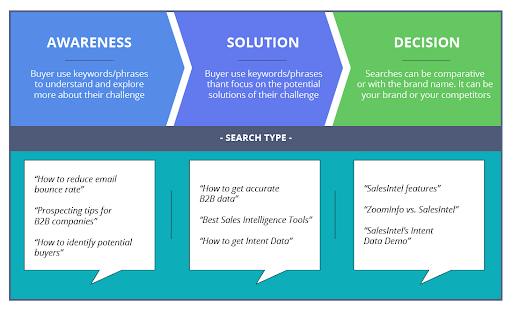What type of leads and prospects make it into your ‘right fit for my business’ category?
Your sales and marketing teams spent a lot of time and effort answering this question. In terms of firm size, type of technology, and job description you undoubtedly have pretty specific answers.
But even if your sales staff calls someone who precisely fits your buyer persona, they fail to close the deal. Why?
Because of the fact that lead qualification – from marketing qualified lead (MQL) to sales qualified lead (SQL) – encompasses more than “fit.” We will dive into the difference between the MQL and SQL, focus on the lead qualification blockage, and how to find those lost leads.
What is Marketing Qualified Lead
A Marketing Qualified Lead (MQL) is a lead who has expressed interest in your offering, participated in your marketing campaign, or is more likely to become a customer than other leads. An MQL is often a lead who has demonstrated interest in your business by providing contact information, arranging a free demo, downloading an eBook or case study, or regularly responding to email marketing.
These are prospective leads interested in you but haven’t yet taken the next step into a sales discussion. From a funnel perspective, Marketing Qualified Leads become Sales Qualified Leads, who eventually become customers.
What is Sales Qualified Lead
A Sales Qualified Leads (SQL) a Sales Qualified Lead is a qualified prospective client who has been judged ready for your company’s sales team to contact and close a deal. These contacts have either made direct sales inquiries or have reacted to bottom-of-the-funnel offerings, such as a free trial. SQLs are often MQLs who have engaged with your sales team in a way that indicates immediate and real purchase potential. These contacts would then be qualified and deemed ready to progress further down the sales funnel.
SQLs come through marketing and advertising before they reach the sales team. MQLs, as discussed earlier, are often warm as they have engaged with your marketing campaigns. They know your brand. This means that when your sales reps approach the lead. If the marketing activities are successful, sales reps don’t need to start the communication from scratch.
SQL vs MQL: Who is at Fault for Lost Leads?
The marketing team produced an eBook. 5000 people downloaded it for free. However, 2000 of the people who downloaded the eBook are not decision-makers, and 2500 of them do not have the budget to purchase any product or service. This rather low MQL to SQL conversion rate of 10% puts the responsibility of change on the marketing department.
Marketing creates the same eBook, restricts its distribution based on spending ability, and provides an initial link only to the management level and higher contacts of niche message boards. 1,000 people downloaded the eBook. However, the sales team could convert only 5 of these into customers. Here, the 0.5 percent SQL to MQL ratio would be a concern for the sales team, not a marketing campaign.
Given that, it is important to identify when a lead is ready to be handed off to sales. Companies often depend on whether the lead fits their ideal customer profile. And, that works to some extent. But as a result, they face a blind spot that leads to inaccurate lead qualification.
The Blind Spot in Lead Qualification
If you are only looking at fit, you will know which leads are qualified but not which ones are ready to speak with salespeople. As a business, you need a second lead scoring model to fully comprehend the quality and sales readiness of your leads.
You may be currently tracking the behavior of your leads through website visits, email clicks, content downloads, and other interactions with your business. Behavioral lead scoring takes this into account. You won’t get the full tale, but you will get a glimpse of it.
Leads already do most of their research before they arrive at your website. You are missing out on the first half of a lead’s research journey if you don’t keep track of the activities they conduct before they connect with your brand. This is a major blind spot in your lead scoring system, and your sales staff is left scrambling to catch up when you eventually identify the lead. Or, they are stuck twiddling their thumbs waiting for leads to show up.
Instead, your sales reps can target warm, qualified leads that may not have reached out yet with Buyer Intent Data.
Avoid Blind Spot in Your Lead Scoring with Buyer Intent Data
Buyer Intent Data helps you to avoid this blind spot by providing you the data to know if a lead falls in the ready-to-buy category or needs further nurturing. Even if that lead hasn’t gone all the way through your marketing and sales funnel.
Your prospects are out there, looking for a solution to a problem you might fix. They search online, consume content, look for solutions, and learn to resolve their pain points.
Intent Data is the set of behavioral signals to understand the intention of your prospects to purchase a product or service.
Businesses can identify “ready to buy” prospects and fine-tune their campaigns using a plethora of aggregated intent signals. Intent Data can be used for future prospecting since it reveals specific trends that might assist you to enhance your prospects’ purchasing decisions along their buyer journey.
For Example…
If you are offering a revenue attribution SaaS product and your prospects are browsing the web for material relating to your service. You want to know not just who is consuming this material but also who is on the verge of making a purchasing decision. Consider the following two scenarios:
Case 1 – Megan is consuming content about the overall benefits of tracking revenue attribution for B2B businesses.
Case 2 – Samuel is digging into articles comparing specific revenue attribution SaaS solutions.
Megan is still in the early stages of her purchasing procedure in Case 1. She is only now learning about the importance of your solutions. So, she might not buy your SaaS product just yet. In scenario 2, Samuel is nearing the end of the buying process and will most likely make a purchase choice shortly.
As a result, you may contact Samuel about selling your SaaS solution and use marketing to guide Megan through the buyer’s journey.
How to Find Buyer Intent Data
SalesIntel helps you discover your prospects’ buying signals based on a wide range of intent topics that prospects are engaging with across the web. With approximately 7,000 intent themes being followed regularly, you can understand what your prospective consumers are interested in before reaching out to them.
Each account is assigned a live score depending on its level of interest in a certain subject. The higher the grade, the more information the account has consumed related to the intent topic you selected. Because it is an automated approach, the lead scoring technique is simplified for easy lead selection. You can choose accounts with the best conversion potential by selecting the topics relevant to your products and services.
Want to get started?






